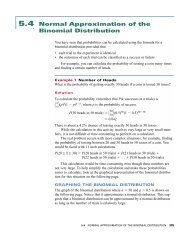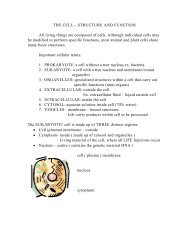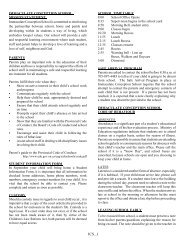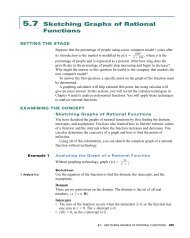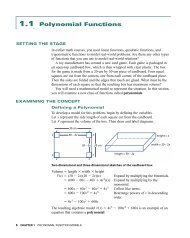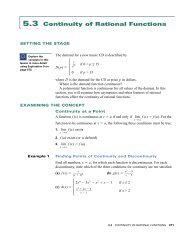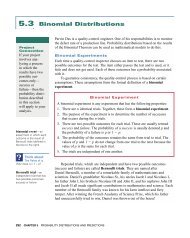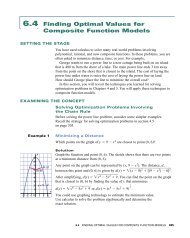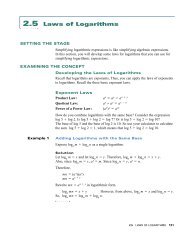5.4 Rate of Change of a Rational FunctionâThe Quotient Rule
5.4 Rate of Change of a Rational FunctionâThe Quotient Rule
5.4 Rate of Change of a Rational FunctionâThe Quotient Rule
Create successful ePaper yourself
Turn your PDF publications into a flip-book with our unique Google optimized e-Paper software.
CHECK, CONSOLIDATE, COMMUNICATE<br />
1. Use an example to show that the derivative <strong>of</strong> a rational function is not<br />
the same as the quotient <strong>of</strong> the derivatives <strong>of</strong> its numerator and<br />
denominator.<br />
2. Compare the quotient rule to the product rule. What is similar about the<br />
two rules? What is different?<br />
3. Why might you need to find the first and second derivatives <strong>of</strong> a rational<br />
function? Give an example <strong>of</strong> a rational function. Then find the first and<br />
second derivatives.<br />
KEY IDEAS<br />
• The derivative <strong>of</strong> a quotient <strong>of</strong> two differentiable functions is not the<br />
quotient <strong>of</strong> their derivatives.<br />
• The quotient rule is a rule for finding the derivative <strong>of</strong> a rational<br />
function.<br />
f (x)<br />
Let h(x) g(x)<br />
. If both f ′(x) and g′(x) exist, the derivative <strong>of</strong> h(x) is<br />
h′(x) where g(x) ≠ 0.<br />
• The quotient rule in Leibniz notation is<br />
, g(x) ≠ 0.<br />
d<br />
d<br />
x<br />
f ′(x)g(x) g′(x)f (x)<br />
[g(x)]<br />
2<br />
d<br />
f<br />
dx<br />
(x) g(x) d<br />
f (x)<br />
d<br />
g(x) x<br />
f (x)<br />
g(x) [g(x)]<br />
2<br />
<strong>5.4</strong> Exercises<br />
A<br />
1. Find the derivative <strong>of</strong> each rational function from first principles.<br />
x<br />
(a) f (x) 3 <br />
(b) g(x) x <br />
<br />
2 (c) h(x) <br />
x<br />
1 x<br />
2. Use the quotient rule to find f ′(x) for each function.<br />
(a) f (x) x <br />
<br />
3<br />
x 3<br />
(b) f (x) <br />
(c) f (x) <br />
(d) f (x) <br />
(e) f (x) <br />
x 3 2x<br />
x 2 x 1<br />
(f) f (x) <br />
3x 4<br />
x 2 6<br />
(x 4)(x 5)<br />
<br />
2x(x 3)<br />
x<br />
3<br />
1 x<br />
ax b<br />
cx d<br />
3x 2 2<br />
x<br />
(g) f (x) <br />
(i) f (x) <br />
x 2 1<br />
2x 3<br />
1 x 4<br />
x<br />
2<br />
(h) f (x) <br />
5x 4 9<br />
x 2<br />
(j) f (x) 5 1 x <br />
x 3<br />
<strong>5.4</strong> RATE OF CHANGE OF A RATIONAL FUNCTION—THE QUOTIENT RULE 383



